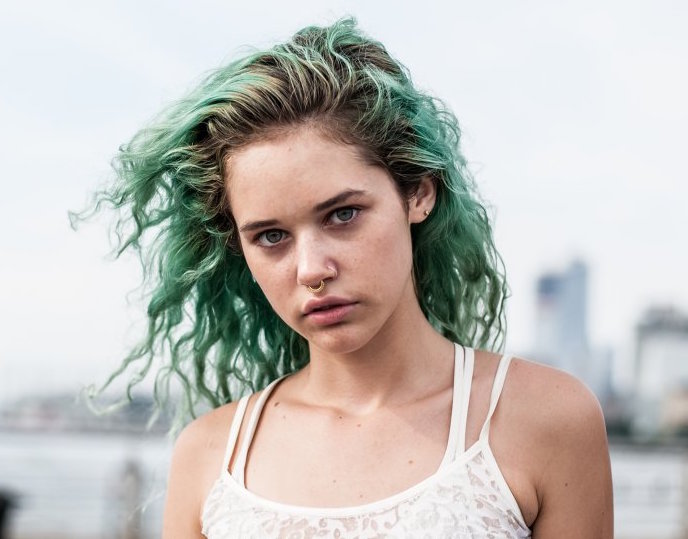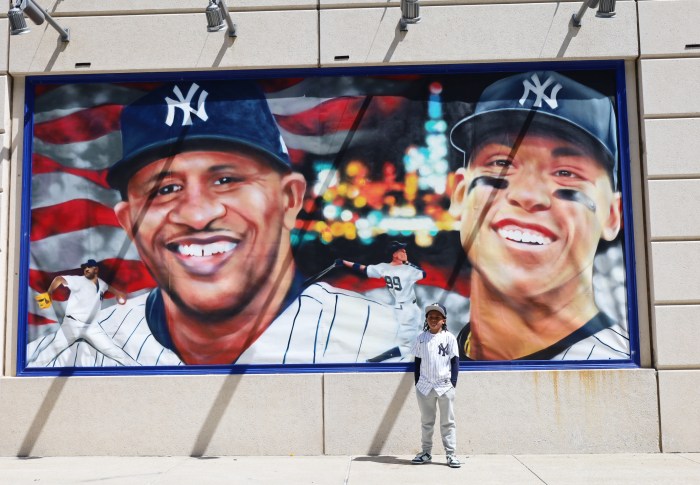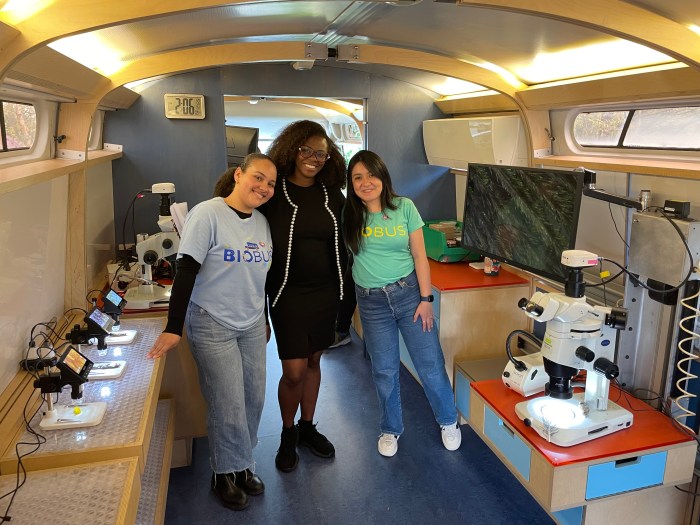INTERVIEWS AND PHOTOS BY REBECCA WHITE | Discussions swirled earlier this year about whether the Church of St. Luke in the Fields should build a new “mission center” for an L.G.B.T. drop-in center at Hudson and Christopher Sts. At the time, one prominent critic — David Poster, head of the Christopher St. Patrol volunteer anticrime group — said the facility really wasn’t even needed anymore because gay youth are no longer coming to the area in the kind of numbers seen as recently as just eight years ago. Back then, police used cops on horseback and set up light towers at key intersections to try to keep the crowds of youths under control. Since then, however, great strides were made for L.G.B.T. equality under President Obama and there has been increasing acceptance, in general, of L.G.B.T. people in wider society. One person who the reporter for this Q&A spoke with said the new L.G.B.T. youth scene is in Bushwick, Brooklyn. Even so, for some at least, the Christopher St. Pier remains a place to come, to meet and mingle, to “chill,” to find romance or just make some new friends.
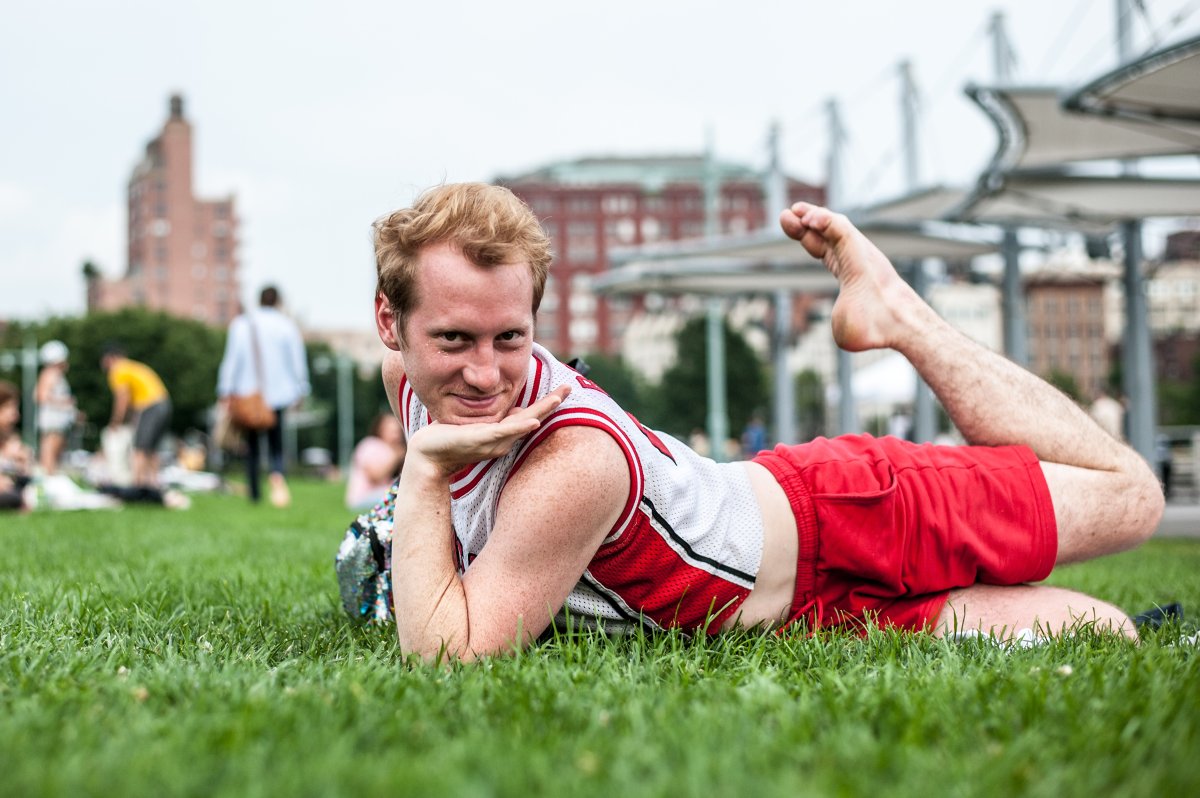
AARON WIGGINS, 24, works at Jivamukti yoga school, at 841 Broadway, and is an aerial circus-arts dancer. Originally from Texas, he moved to New York City in 2011 for college, studying ballet at Marymount Manhattan. He got cruised in the pier’s bathroom the day The Villager interviewed him.
THE VILLAGER: How long have you been coming to the Christopher St. Pier?
A.W.: This is actually the first time at this pier. I’ve been to piers nearby, but I’ve never been to this one.
V: Do you come to Christopher St. often?
A.W.: I come around every now and then. It’s like a lot of gay people.
V: Do you feel more comfortable here than other places in New York?
A.W.: I do feel a little more comfortable in this area. I live in West Harlem where gay people are not as common, but I feel very accepted in that neighborhood, as well.
V: What has been your best experience at this pier? Was it maybe today?
A.W.: It was! This may not even make the article, but I got cruised at this pier already.
V: What does that mean?
A.W.: It’s like a gay term, as in like when someone wants to hook up with you. It’s very common at piers. Back in the ’70s and ’80s it was like way more common, from what I know of history and articles. The best way I could put it is someone lets you know that they want to hook up with you by either giving you a certain definite look or exposing themselves, which is what happened.
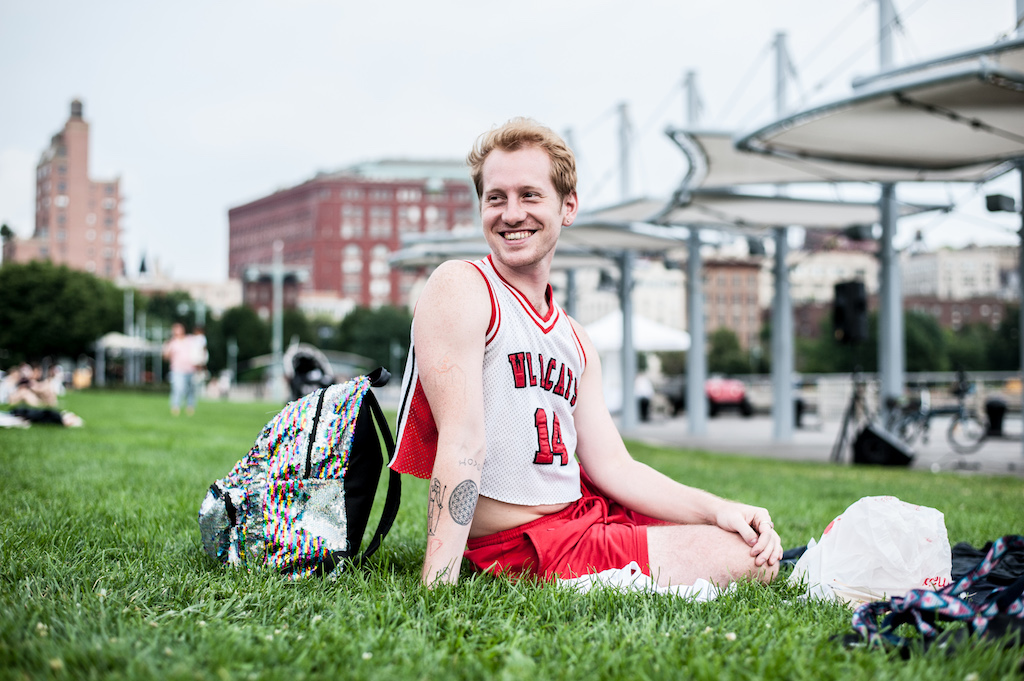
V: Where did that happen?
A.W.: In the bathroom. But still…it’s like, come on. I’m on the phone with my therapist and it’s like happening. I’m just like, Oh my God.
V: Wow, you wouldn’t think that would happen during the day and given the crowd here today. There’s a little baby right there.
A.W.: But yes. It’s very prevalent still.
V: What was your response to that? Did you ignore it?
A.W.: I ignored. I was on the phone. It’s not my first time. I used to work in the nightclubs, so, I get it. It’s like, “All right, come on.”
V: When did you come out?
A.W.: I was 16.
V: Was it hard?
A.W.: I think I was lucky because I grew up a ballet dancer, and so it’s like, the odds are… . And my parents never had any qualms about it, even with me being from Texas. There was never any issue, so I was lucky with that.
V: Do you think Christopher St. could use an L.G.B.T. drop-in center?
A.W.: I think it’s a good idea mainly just because of whatever Trump’s doing right now. It’s like, are you kidding me? He’s like moving us backwards. If it was different, I would say maybe it’s not as important, but…who knows where we’re headed? I think we should have something, for sure. Especially for youth. I’m 24, but I feel like I’ve already kind of crossed the point where it’s like really tricky. I’ve already made it this far. With all my friends and family, I’m accepted.
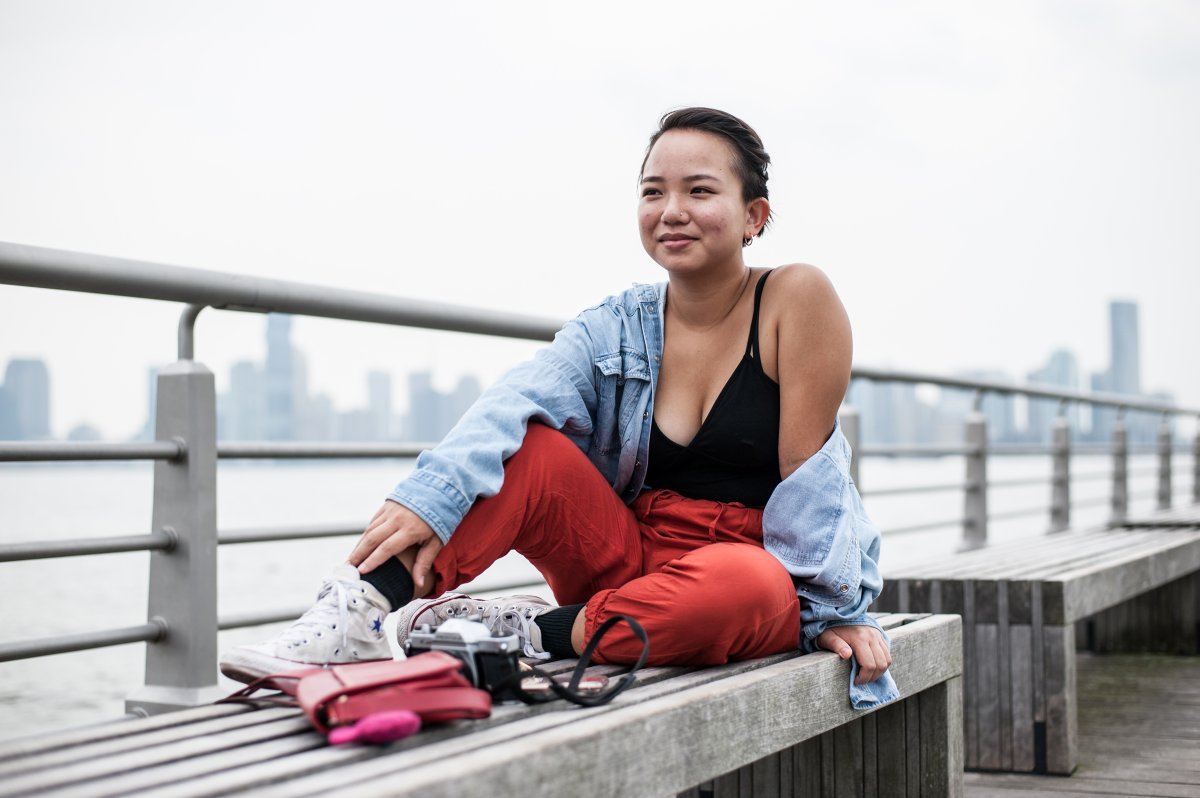
AMY IGARASHI, 19, bisexual, sophomore astronomy major at San Diego State University in her home town. She was visiting New York City for the weekend.
THE VILLAGER: Why did you come to the Christopher St. Pier today?
A.I.: Just chillin’ with my friends.
V: Do you feel comfortable here?
A.I.: I feel like coming here. I feel more comfortable expressing myself as like more towards…like less as a cis-hetero person, I guess. And it’s, like, a pretty liberal city.
V: So how do you identify?
A.I.: I would identify as — like, a lot of people say — bi or I think, kind of like on the bi / pansexual spectrum. More like I don’t really have a preference. It’s a hard question. Most broadly, I would identify as like pan. I feel, for me, that sexuality is kind of fluid. It really depends on the point of my life, but also I feel like I have been attracted to women. But also “woman” ’s a broad term. I’m just open to anything.
V: Are you single at the moment? Do you have a girlfriend or boyfriend?
A.I.: I’m currently single.
V: When did you come out?
A.I.: I feel like that’s kind of a hard question. A lot of people say, “What is coming out, really?” Is it telling your close friends or just do you really have to tell the whole world that you’re out? For me there hasn’t been like a coming-out thing. I’ve just, like, been more like open about it with a few people in my life. I have queer friends that I’ve definitely talked to about our own queerness and stuff. And there are people who are bicurious that I know. And when sometimes people come out to me, and I’m like, O.K. like, cool. I fall under that umbrella, too.
V: Have you gotten more comfortable with your identity over time?
A.I.: I think the older I got the more comfortable I felt. And also I feel like queer culture, in general, has like really become more prominent, I guess. People are more accepting, now. When I was younger, that concept wasn’t even there. I didn’t even know it was possible to be anything more than straight.
V: When did you first feel comfortable talking about it your sexual identity?
A.I.: Maybe, like, freshman year of college, which would be around 17, 18.
V: How would you feel about having an L.G.B.T. drop-in center near here at Christopher and Hudson Sts.?
A.I.: Part of me says I don’t know enough about it, in terms of is there a need here for that? I don’t know how much it will be used, but I definitely think that it’s important to have those kinds of facilities. And maybe it doesn’t directly appear that there is a need for it. But once you do have that accessibility and stuff, there will be people that seek that out. I’m always in support of things like that for the queer community.
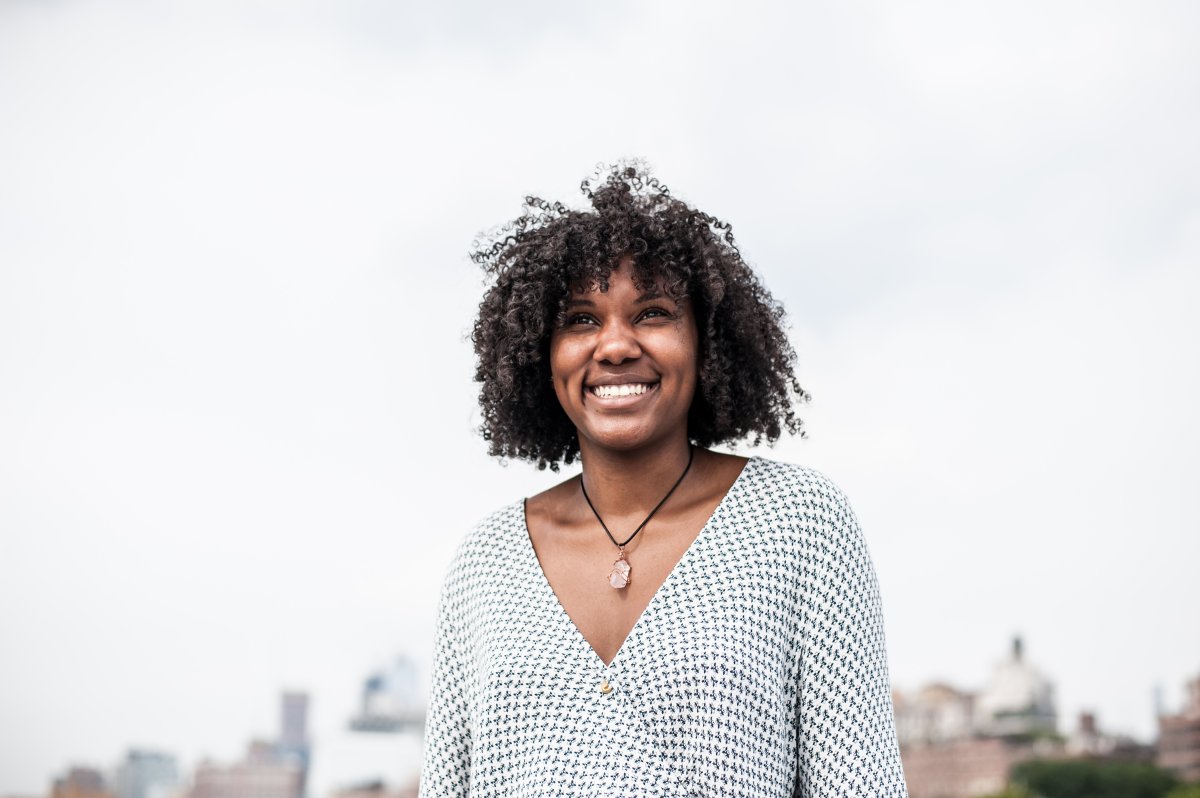
CHELSEA ALLISON, 18, bisexual, just finished high school on Long Island, where she lives in a town she didn’t want to name. She plans to attend The New School in the Village this fall as a freshman.
THE VILLAGER: Is this your first time on the pier?
C.A.: This is my third time.
V: What’s the best experience you’ve had out here? Do you feel more comfortable here than other places?
C.A.: Yeah, the pier’s a cool place. I think this would probably be the best time we’ve come. It’s a bunch of us and we just had some girl talk. It’s a pretty open area. It’s nice. Not a lot of congestion of people. For the most part, it’s a really calm atmosphere.
V: How old were you when you came out?
C.A.: I came out to my mom, the past year and a half. My dad’s pretty recent — about two weeks ago. Yeah. So, that’s an experience. I think the hardest part is understanding where the stigma comes from and understanding that it comes from such a place of fear. That’s what it was. My dad, especially. He’s a retired correction officer, and then just the stigma of homosexuality in the prisons and how that was perpetrated there. And then him coming home and him having his own ideas about what it meant to be a queer body living now in this time and age and my own experience — how those two have collided, almost. It’s been really difficult, but we’re getting there.
V: How old were you when you came out to your mom?
C.A.: 16.
V: Would you support the idea of a drop-in center nearby here on Christopher St.?
C.A.: Yes. That’s definitely a necessity that the community needs, just because it’s so common for queer voices to always be stepped on, or for plans to always just fall through. It never works out. So, I think having that and having that place, that stability for people to come and feel welcomed and be able to be themselves is a necessity, and it’s something the community needs.
V: Do you feel that, if there was a drop-in center around here, you would ever need to use it?
C.A.: Of course…because at the end of the day, while I’m a person, and I’m living life, I’m also a queer person. Because certain times there are certain experiences that you have one day that just kind of mess up your whole day and you just might need a place to go to get stable for a second. And that could be one of those places. And to have that would be fantastic.
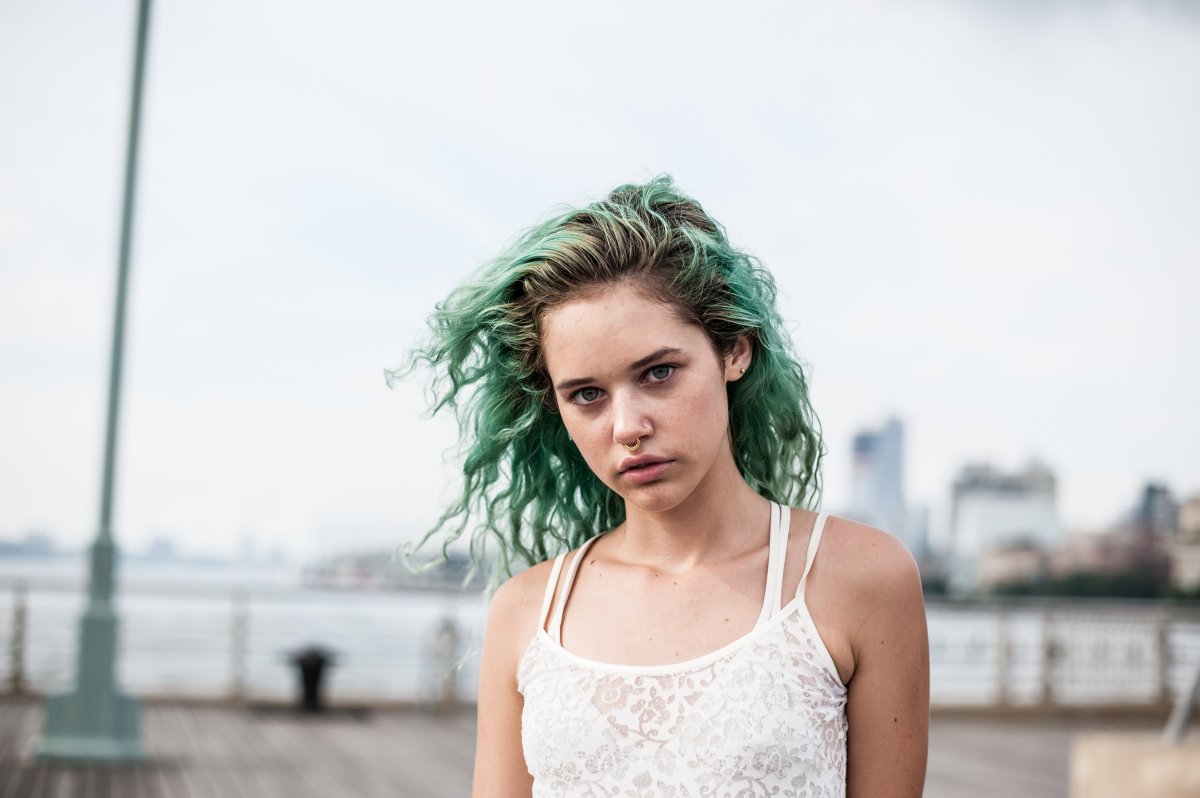
ROBIN OWENS, 20, sophomore at New York University, works at a Soho pharmacy, models, lives in the East Village. Originally from Richmond, Virginia, she’s been coming to the pier for slightly more than a year —every few weeks with friends.
THE VILLAGER: Why did you come out here today? Do you come to the Christopher St. Pier a lot?
R.O.: Yeah. Especially my freshman year. I lived right on Fifth Ave., and so I’d come here with friends, kind of a place to hang out, I guess, and smoke and get away from the campus and the park. Today was just, we were at Washington Square Park trying to kill some time. So, we just decided to skate down here.
V: When was the first time you came down to Christopher St. and the pier?
R.O.: The first time was I think in April 2016.
V: Do you feel more comfortable, in general, on Christopher St.?
R.O.: I think, in general, New York is a really safe place…Ever since coming to New York, it’s been the biggest relief off my chest and my shoulders because people are way less judgmental and just don’t care. Being up here, it’s more that I have felt relief and comfort in my identity.
V: How do you identify and when did you come out?
R.O.: I would say I identify as bisexual. I’ve known since I was pretty young…10 or 11. But, I definitely never felt comfortable being out at home in Virginia. It’s a stifling place to be. So, ever since coming to N.Y.U., I’ve been out here since my first day. It was like always a nonissue. As soon as I came here, I felt very comfortable. I was 18.
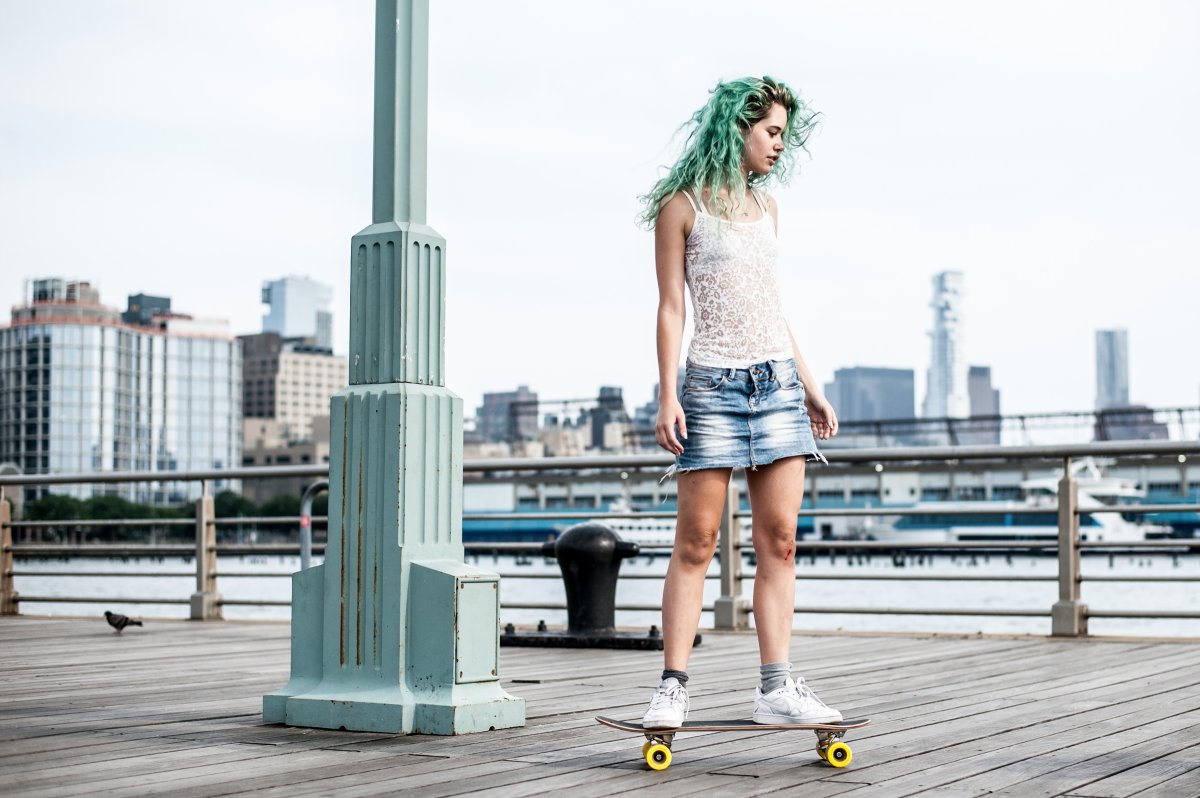
V: Did you come out earlier to any family or friends?
R.O.: Yeah, I had come out to like my close friends and a couple of people in my family. I was 16. But it was kind of something that I really was uncomfortable with just because people, especially being bisexual, it’s like very different. People seem to understand now, like in Virginia, being gay. They can at least wrap their minds around that. But being bisexual is kind of a different story, because you don’t necessarily fit into a mold. Especially being a bisexual woman, there’s always this idea that you’re doing it for a man’s attention or that you’re lying about it.
V: Or that you just haven’t figured it out yet.
R.O.: Yeah, that you just want to, like, make out with girls. That’s always the stigma that I kind of felt in Virginia. I ended up meeting so many people here who identify as L.G.B.T. or were in an L.G.B.T. community that it made me way more comfortable being open about it, talking about it, not being uncomfortable making comments, sharing with people, making jokes about it. It’s kind of like you come out in little ways every single day. It’s not like you come out once and you have some tattoo on your head that says, like, “bisexual.” You come out every time somebody says, “Oh, you’re into girls.”
V: Would you support the idea of having an L.G.B.T. drop-in center on Christopher St.?
R.O.: I would be really in support. I’ve had a lot of friends whose families have been very unaccepting of the fact. And I think that when you live in a city like this — especially me coming from a school like N.Y.U., it’s a very expensive school — so, you don’t really see that side. You really only see the L.G.B.T. parties and people having fun and the sexual side. I think, a lot of times, it’s easy to forget that it’s not as easy for everybody and there are so many L.G.B.T. youth that don’t come from these affluent families and they’re struggling. I think it’s easy to put that out of your mind when it seems like, “Oh, times have changed, yet the area is getting more gentrified.” There is a reason why we don’t see it as much. But just because we don’t see it doesn’t necessarily mean it’s not there.



